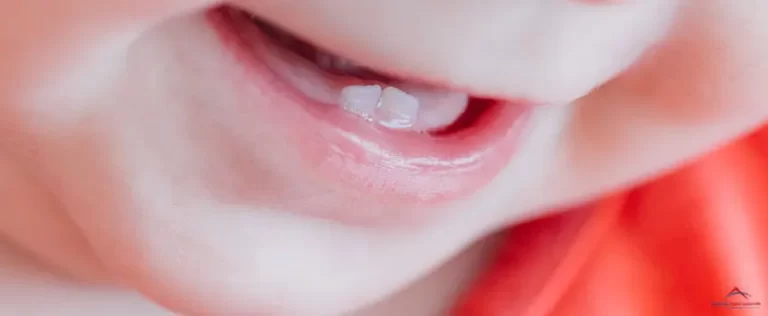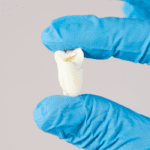Braces are the most popular and effective way to straighten your teeth.
These devices are made of different materials and pressure your teeth to move them to their correct positions slowly.
Modern braces went through many changes to become what they are today. So, let’s travel back in time and see how they began and became the tools that help us straighten our teeth today.
Why Use Braces?
However, first, let’s look into why we use braces. For some, braces are mere cosmetic treatments; for some, they are necessary medical treatments. Dentists and orthodontists may recommend braces for the following reasons:
-
Overbites – the bottom front teeth are more forward than the upper front teeth.
-
Underbites – the upper front teeth overlap the lower front teeth.
-
Open bites – the upper and lower front teeth don’t touch.
-
Uneven spacing between teeth – gaps between your teeth due to missing teeth or teeth that are smaller than usual.
-
Teeth crowding – teeth overlap and rub against each other due to being too close, leading to tooth decay and gum disease.
Braces in Ancient History
Yes, the history of braces begins in ancient times. Even then, we humans have a fascination for straight teeth. Each ancient culture had different means of straightening teeth.
Braces and Egyptian Mummies
Archaeologists have found many mummified remains throughout the years; along with their treasures, they also found early attempts at closing tooth gaps. Some mummies had animal intestines called catgut made into a cord that wrapped around teeth, similar to how modern orthodontists run their wires to close gaps.
Braces and Ancient Romans
Historical evidence suggests that Romans were also concerned about their teeth. An ancient Roman physician named Aulus Cornelius Celsus spent his entire life researching and developing new medical techniques. He kept meticulous records, which included the first recorded attempt at straightening or moving teeth using pressure. In his records, he had a case that involved fingers applying pressure on the teeth at regular intervals. Celsus then hypothesized that teeth slowly moved and changed alignments due to the pressure applied by the fingers.
Ancient Romans also invented a dental device that resembles modern orthodontic dental devices. Archaeologists discovered many Roman tombs that had gold wire wrapped around the teeth of some of the deceased. These were early ligature wires that attached the arch wire to the brackets. The wires were fixed to the teeth to move teeth and close gaps.
Braces in the 18th to 19th Century
During this part of the evolution of braces, the concept of orthodontic braces began appearing in medical journals and had more research and studies done.
Pierre Fauchard
Pierre Fauchard was an 18th-century French dentist, often called the “Father of Modern Dentistry.” He developed many teeth-straightening methods and was a key figure in the development of braces.
Some of the teeth straightening methods he developed include:
-
Filing teeth that protrude too far from neighboring teeth.
-
Using a “pelican,” a set of metal forceps that can add spaces between crowded teeth
-
Using a “bandeau,” a metallic band that expands a patient’s dental arch.
The bandeau is his most significant contribution to the history of braces; many consider it the first real orthodontic appliance.
Etienne Bourdet
Etienne Bourdet was one of the most notable dentists of 18th-century France next to Pierre Fauchard in orthodontics history. He was the king’s dentist and is considered one of the foundations of modern orthodontics. He wrote many books that outline his contributions to modern dentistry.
Bourdet was known for removing teeth to correct teeth crowding and creating space for teeth, which essentially set the stage for modern orthodontics.
Christophe-Francois Delabarre
Who invented braces? None other than Cristophe-Francois Delabarre. He invented the wire crib, an early form of dental brace that closely resembled modern designs. It is a half-circle device applied directly to the teeth to keep them aligned.
When were braces invented? Delabarre invented these wire cribs in 1819.
Braces in the 20th Century
When were braces first used? The term “braces” was first used in the early 1900s when they were first used and became popular. The name has never changed, but this orthodontic device has seen significant improvements in techniques and technologies involved during this period.
Edward Angle
The American dentist Edward Angle pioneered orthodontics just as the 20th century began to unfold. Angle was a pioneer in “tooth regulation” and was granted patents for 37 tools to treat malocclusions.
These two tools were his most notable inventions:
-
A metal arch expander called The E-arch
-
The Edgewise Appliance, a metal bracket that looks a lot like modern braces
These two parts were sometimes combined with his other 37 inventions and sold to other orthodontists as the “Angle System.”
Dental Adhesive
The basic orthodontic techniques remained relatively unchanged until the 1970s, when many breakthrough techniques were developed. The most important breakthrough was the invention of dental adhesives that attach dental brackets to the teeth. Dentists had to wrap wires around each tooth to keep brackets in place before dental adhesives were invented. Tie wires and elastic ligatures were also used to keep braces tightly secured.
Stainless Steel
Stainless steel was becoming a popular material in the 60s; however, dentists only began using it in their braces during the mid-70s. Materials like gold, silver, and platinum were the popular material choices in the long history of braces, which meant they were expensive back then.
Stainless steel made things easier for patients and dentists; patients can now enjoy lower braces costs, and dentists rejoiced at its flexibility and ease of use.
Invisible Braces
Invisible braces were also introduced in the 1970s. People didn’t want the unsightly head gears and ugly wires early braces had back then. Japanese and American dentists began exploring the possibility of applying dental braces on the inner side of teeth instead of the outer side. Placing brackets behind the teeth allowed patients to enjoy the benefits of braces without other people seeing their braces.
It wasn’t until 1997 that Invisalign was developed.
Enjoy straighter teeth with Advanced Dental Group.
The history of braces timeline shows us how much has gone into developing teeth straightening methods. Thankfully, our partner dentists in Dillon, CO, can help you achieve a straight smile with the help of modern braces and other treatments that suit your needs. Contact us today, and we’ll connect them to you right away.





